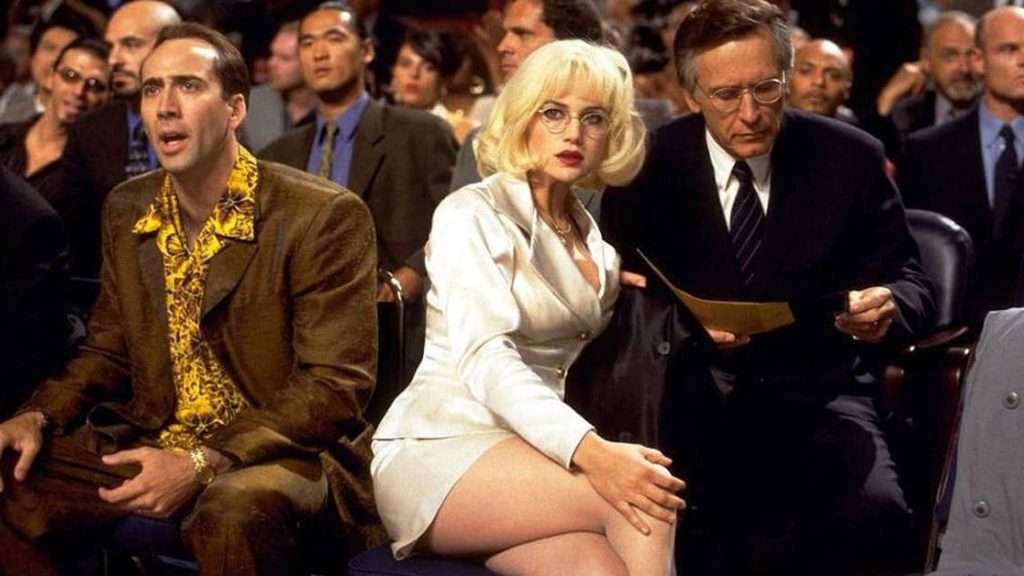Donald Trump might, perhaps inadvertently, shake up where Hollywood looks to shoot tentpoles and TV shows.
With the entertainment industry in a spending slump after the 2023 writers’ and actors’ strikes, shooting facilities and production crews north of the U.S. border have had a slow year. But Trump’s election victory sparked optimism when it boosted the American dollar against the Canadian loonie, ostensibly providing Hollywood producers even more savings by tapping the country’s extensive production infrastructure, especially in Toronto.
Now Trump’s threat of a 25 percent tariff on Canadian and Mexican exports to the U.S. appears likely to depress the value of the Canadian dollar even further, making it even cheaper for Hollywood to shoot in Canada. “This kind of FX [foreign exchange] fluctuation consistently benefits Canadian service production. It also enhances the value that comes out of international co-productions,” says Noah Segal, co-president of Toronto-based production company Elevation Pictures.
The value of the loonie, or Canada’s dollar, had already tumbled to just over 70 cents against the American greenback, a low not seen since mid-2020. And the major studios and streamers have already begun returning north to shoot originals, whether big budget tentpoles or small indie films, albeit on tighter budgets than the pre-strike boom time.
Paul Bronfman, chairman and CEO of Comweb Corp. and a senior adviser to Pinewood Toronto Studios, tells The Hollywood Reporter that the beneficial exchange rate might present cost-conscious producers with an offer they can’t refuse. “The Canadian dollar is already down,” he says. “If it goes below 70 cents, it’s going to be too good for the Americans to resist.”
That impact includes VFX studios potentially having to pay more to purchase American visual effects software and hardware if the Canadian dollar continues to fall, or indie producers facing higher costs for Los Angeles-based satellite offices and employees.
Not surprisingly, Canadian indie producers are busily finding ways to work around the U.S. trade policy threat. Says Josh Bowen, co-CEO and head of animation at Cutting Class Media: “You can work around any tariff by being innovative and giving your partners reasons to still buy stuff from you. And so if that means I’m essentially providing a discount with the way that I’m doing things already, then that’s great value to my partner when still providing great quality.”
Jennifer Twiner McCarron, CEO and Chair of Thunderbird, which produces originals like the animated Last Kids on Earth and scripted series like Man in the High Castle, stands to be positively impacted by the tariff when doing service production work for major U.S. studio and streaming clients. She notes that, given Trump’s antagonistic relationship with Hollywood, he may not be too bothered by more productions leaving L.A. for Canada. It would, after all, be a typically Trumpian way to stick it to California and governor Gavin Newsom, who in late October unveiled a plan to double the state’s tax incentive program to $750 million to staunch a production exodus.
“I don’t know how motivated Trump is to make sure that all the work stays in Hollywood. It’s not the first industry he’s going to double over to help, let’s say that,” she says. “Everyone is looking for ways to do high-quality content at a cheaper price point. And we would still have our great tax incentives in place.”
Canadian visual effects studios also see upside from a depressed loonie as they can already execute for less money and are close to and technologically entwined with the U.S. market. “I can see that in the number of shows starting to shoot here,” Neishaw Ali, CEO and executive producer at Spin VFX in Toronto, says. She adds if Hollywood players remove any currency risk by locking in a Canadian dollar at 70 cents to do visual effects up north at some point in 2025, “our American friends will do very well.”
Nicholas Tabbarok, an indie producer with Toronto-based Darius Films, faces a double-sided impact from a lower Canadian dollar bringing more American business and film financing north. Any pre-sale or investment from American sources will offer more value to stateside partners, which could help with acquisitions and financing.
But when the Canadian industry gets busier producing original productions by American filmmakers, Tabbarok has to compete with major studios and streamers for soundstages, rental equipment and crews. “If I’m making a $10 million movie, I’m renting gear and hiring crew against Netflix’s tentpole movie,” he explains.
A question mark remains over whether Trump’s tariff threat will apply to U.S. buyers of licensed Canadian content, leading local film and TV producers to look to Ottawa to help avoid the impact of potential American trade measures likely to fall hardest on the domestic auto and oil industries.
“I’m hopeful that the Canadian government will be successful in convincing the U.S. government to spare us much of the brunt of this policy,” Anthony Leo, co-president of indie producer Aircraft Pictures, insists.
Other studio operators up north are also optimistic about 2025. Eoin Egan, co-managing partner and COO at Cinespace Studios, added, “Toronto’s unique combination of stable incentives, world-class infrastructure, and unmatched crew talent — combined with its commitment to crew and performer diversity — establishes it as a premier destination for film and television production … we look forward to the opportunities that 2025 will bring.”




















 English (US) ·
English (US) ·